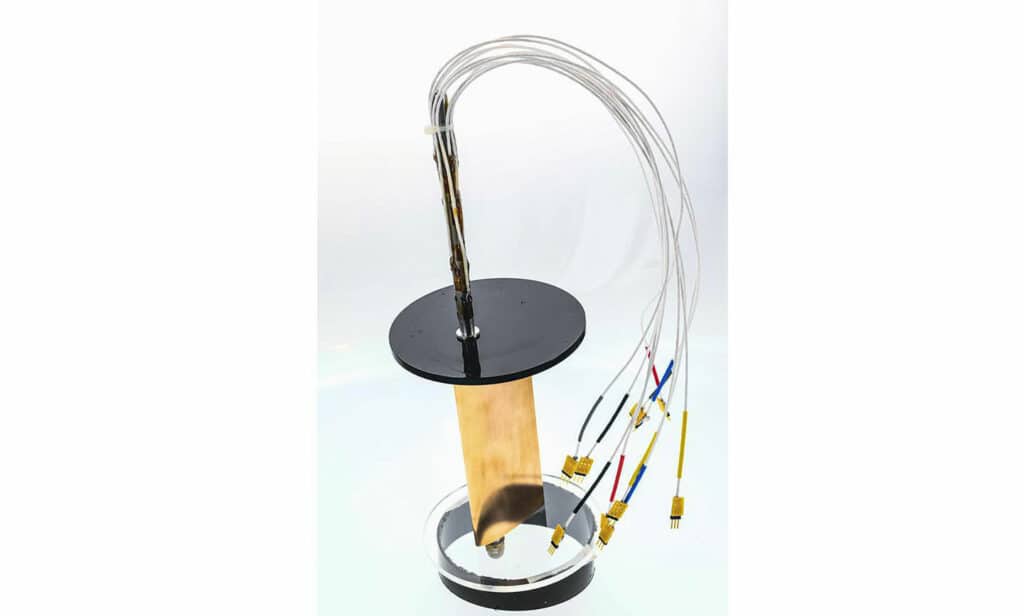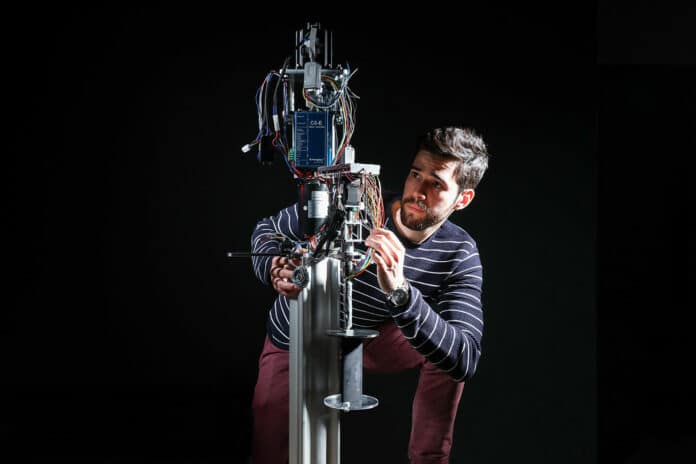Vertical-axis wind turbines (VAWT) are great candidates for enabling wind power extraction in urban and off-shore applications. Unlike the commonly known horizontal-axis wind turbines (HAWT), VAWTs spin perpendicular to the wind rather than parallel.
VAWTs have a slower rotation speed and are less noisy than HAWTs. They also achieve greater wind energy density and require less space for the same output, making them suitable for both on- and off-shore installations. Additionally, VAWTs are known to be more wildlife-friendly as their lateral rotation makes it easier for birds to avoid the blades.
Despite all these advantages over traditional horizontal-axis turbines, they are not widely used in today’s wind energy market.
According to Sébastien Le Fouest, a researcher in EPFL‘s School of Engineering Unsteady Flow Diagnostics Lab (UNFOLD), it is due to an engineering problem – air flow control. He believes that this problem can be solved with a combination of sensor technology and machine learning.
In their recent study, researchers have described two optimal pitch profiles for VAWT blades, which can lead to a 200% increase in turbine efficiency and a 77% reduction in structure-threatening vibrations.
“Our study represents, to the best of our knowledge, the first experimental application of a genetic learning algorithm to determine the best pitch for a VAWT blade,” Le Fouest says.
While Europe’s wind energy capacity is growing every year, it still falls short of the UN’s 2050 objectives for carbon emissions. The barriers to achieving this is public acceptance of wind turbines, which is very low due to their size and noise.
VAWTs work best when there’s moderate, continuous air flow. Due to their vertical axis of rotation, the blades are constantly changing angle with respect to the wind. When there’s a strong gust of wind, the angle between the air flow and the blade increases, which creates a vortex through a phenomenon called a dynamic stall. These vortices create transient structural loads that the blades cannot withstand.
To address the issue of lack of resistance to gusts in VAWTs, researchers installed sensors on an actuating blade shaft to measure the air forces acting on it. Then, they generated a series of ‘pitch profiles’ by pitching the blade back and forth at different angles, speeds, and amplitudes.

Then, they used a computer to run a genetic algorithm, which performed over 3500 experimental iterations. The algorithm selected the most efficient and robust pitch profiles and recombined their traits to generate new and improved ‘offspring.’ This approach allowed the researchers to identify two pitch profile series that contribute to significantly enhanced turbine efficiency and robustness, turning the biggest weakness of VAWTs into a strength.
“Dynamic stall – the same phenomenon that destroys wind turbines – at a smaller scale can actually propel the blade forward. Here, we really use the dynamic stall to our advantage by redirecting the blade pitch forward to produce power,” Le Fouest explains. “Most wind turbines angle the force generated by the blades upwards, which does not help the rotation. Changing that angle not only forms a smaller vortex – it simultaneously pushes it away at precisely the right time, which results in a second region of power production downwind.”
Le Fouest has received a Swiss National Science Foundation (SNSF) BRIDGE grant to build a proof-of-concept VAWT. The goal is to install it outdoors so that it can be tested as it responds in real-time to real-world conditions.
“We hope this air flow control method can bring efficient and reliable VAWT technology to maturity so that it can finally be made commercially available,” Le Fouest says.
Journal reference:
- Le Fouest, S., Mulleners, K. Optimal blade pitch control for enhanced vertical-axis wind turbine performance. Nature Communications, 2024; DOI: 10.1038/s41467-024-46988-0
